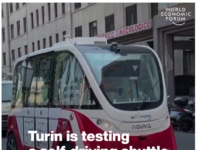The Government of Canada is experimenting writing existing laws and proposed regulations into code. Encoding rules allows us to run legal simulations in the regulatory drafting room, which helps us detect ambiguities, loopholes, and gaps in the rules that often go unnoticed. However, existing tools designed by and for programmers are not intuitive for rule-makers. In response, we set out to develop one – an open-source Rules as Code tool called Blawx.
Innovation Tag: Reframing Rules & Regulations
The Small Business Development Corporation (SBDC) has embraced human-centred design to transform the way regulation is developed and applied for small businesses in Western Australia. The SBDC partnered with 22 local governments to deliver the Small Business Friendly Approvals Program, which involved reviewing the approvals journey from the small business’ perspective and designing reforms to streamline processes. The Program has ignited transformational change and made it easier to do…
Cyd (pronounced “Keyed”) is the community-led platform for procurement and commercial practitioners across the public sector in Wales.
It’s helping the Welsh public sector to learn from and support each other to implement policy through their day-to-day activities, in line with the Well-being of Future Generations (Wales) Act 2015.
The characteristics of Cyd are: user-centred, design-led, iterative and incremental, collaborative, multidisciplinary, and working in the open - inherently…
Case Study
Creating public value: New Personnel Requirements Plan and innovative recruitment methods.

The innovation strategically aligns the Chamber of Commerce of Cosenza's (Camera di Commercio di Cosenza) personnel approach with its evolving goals and societal needs. It introduces a fully innovative, multidimensional recruitment process, impacting professional profiles, job announcements, selection processes, and communication strategies. This benefits the Chamber by enhancing recruitment efficiency and attracting qualified candidates, seemingly distant from institution but capable of…
The Intergovernmental Network and Competition for regulatory reform was designed to provide a driving force for regulatory reform and for mutual learning between local governments. It moves away from existing top-down regulatory innovation and rather motivates bottom-up regulatory reform policy, enables mutual learning of best practices, and allows local governments to benefit. Also, the final beneficiaries of the Network are citizens and businesses, as when regulatory innovation increases, so…
“Sperimentazione Italia” is a horizontal sandbox that allows companies, universities, research bodies, university startups and spin-offs from any sector (except excluded areas of application) to test pilot projects in the field of digitalisation and technological innovation, by derogating regulatory constraints. The main objective is to conduct live experiments in a controlled environment under the regulator’s supervision and collect data to promote future-proof regulations.
The move to introduce a Blended Working Policy across the Irish Civil Service represents the most significant change to working arrangements in decades. Building on the proven success of remote working in response to the pandemic, this shift in traditional working arrangements represents a major change. And it enhances the Irish Civil Service's positioning as an Employer of Choice to attract and retain a new generation of workers who prioritise flexibility, self-development, mobility, and…
Sandbox.Rio is the first controlled experimental environment in a Brazilian capital to test innovative solutions that do not fit into the pre-existing regulatory scenario. Based on the tests, information is collected that helps the City of Rio understand the innovations and the accompanying receptive regulatory framework that would be needed to adhere to new technologies. In addition, the generated database helps the design of public policies in Rio, which is established as a model smart city in…
As part of Gov. of Canada ininitiatives to measure regulatory burden, ministries have to report their Administrative Burden Baseline (ABB) a metric calculated using a decision tree based on the text of regulations. This is a long and tedious process that requires combing through regulation and manually parse individual provisions. The Regulatory Evaluation Platform automates that process (it takes seconds v. weeks when done manually) and makes it more timely by allowing for weekly refreshes.
The reason for creation was to improve inspection models of external control, which were based mainly on legality and conformity. IEG-M index is an instrument for measuring public area effectiveness, as it analyses the inputs, resources and processes of the local administration, evaluating its policies and activities. There are many finalistic results indexes, but none of them deals with the evaluation of processes to analyse the application of public money that impacts local communities.





